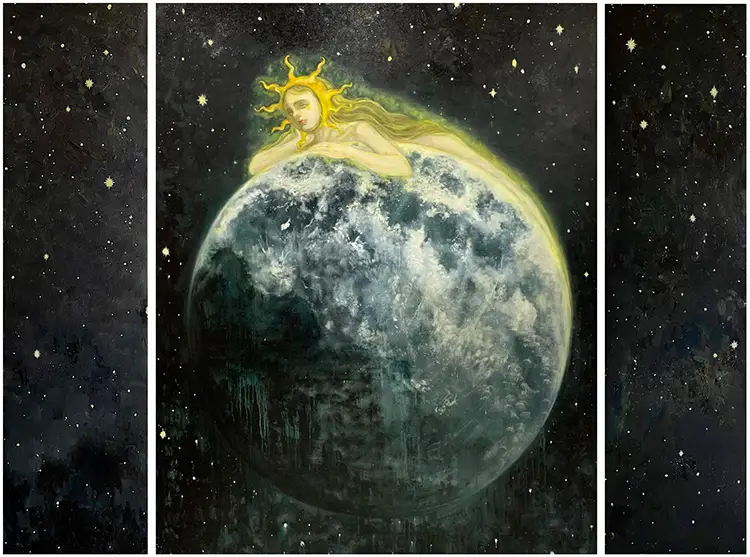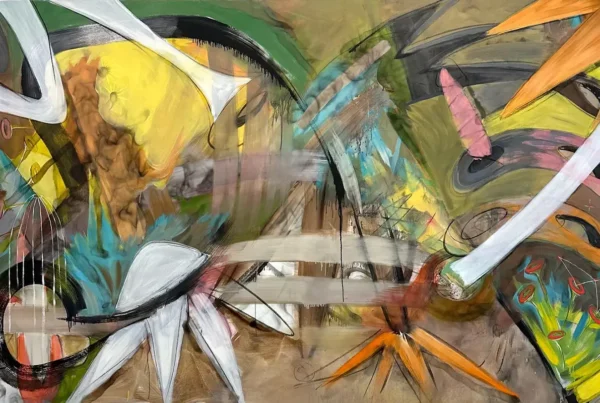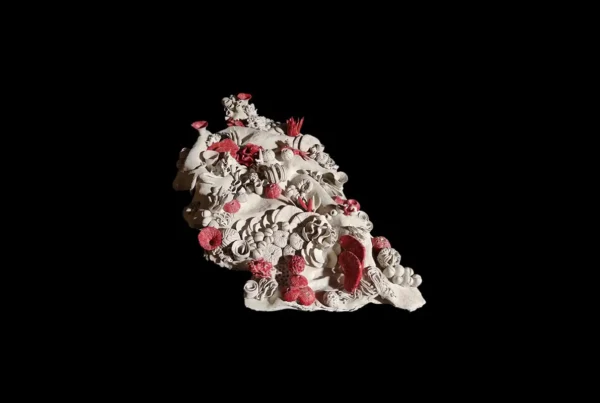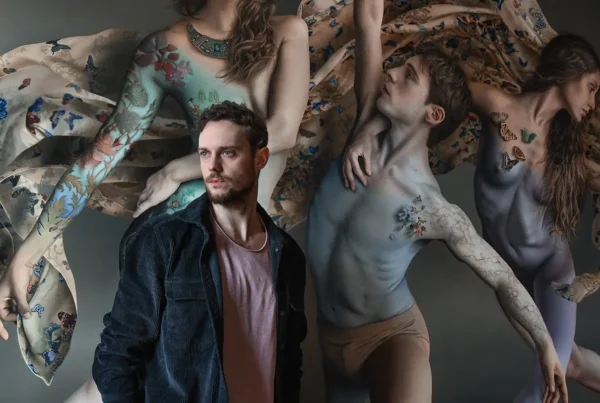“Art became that voice, and eventually, it became the core of my life and work.”
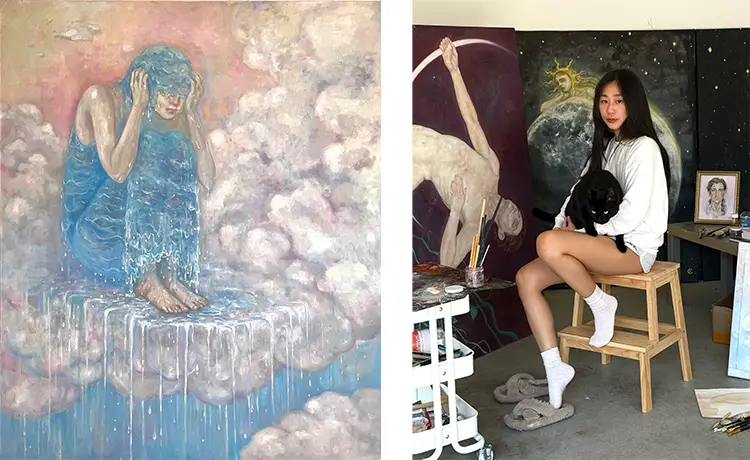
The Artist Across Borders: A Life Painted in Translation
Qinying Cai’s artistic journey began in China, continued through rigorous classical training in Russia, and now unfolds in the United States, where she currently lives and works. Each cultural and geographic shift has sharpened her ability to perceive the nuances of human emotion, allowing her to translate them into visual form with profound sensitivity. Her paintings reflect this layered background—not just in subject matter but in the emotional depth and psychological insight they offer. By navigating vastly different worlds, she has developed an artistic voice that resonates with viewers across borders and identities.
Her formative years at the Repin Academy of Fine Arts, renowned for its classical approach to oil painting, provided Cai with a solid technical foundation. However, even with that discipline ingrained in her, her work continues to evolve alongside her own emotional and personal growth. The structured techniques of realism now serve as a backbone for paintings that center on inner worlds and intangible experiences. Her commitment to representing emotional truth, rather than surface appearances, sets her apart in a saturated visual culture often dominated by aesthetics over meaning.
The emotional introspection that fuels her work is no accident. For Cai, art was never just a pursuit—it became a natural extension of her inner voice, one that predated language. From early childhood, she felt an instinctive pull toward expression, guided by feelings she couldn’t yet name. Over time, that quiet urge matured into a powerful drive to create, and painting became both her sanctuary and her amplifier. Her canvases do not merely depict—they articulate, reflect, and respond, standing as visual testaments to the emotional landscapes she continues to explore.
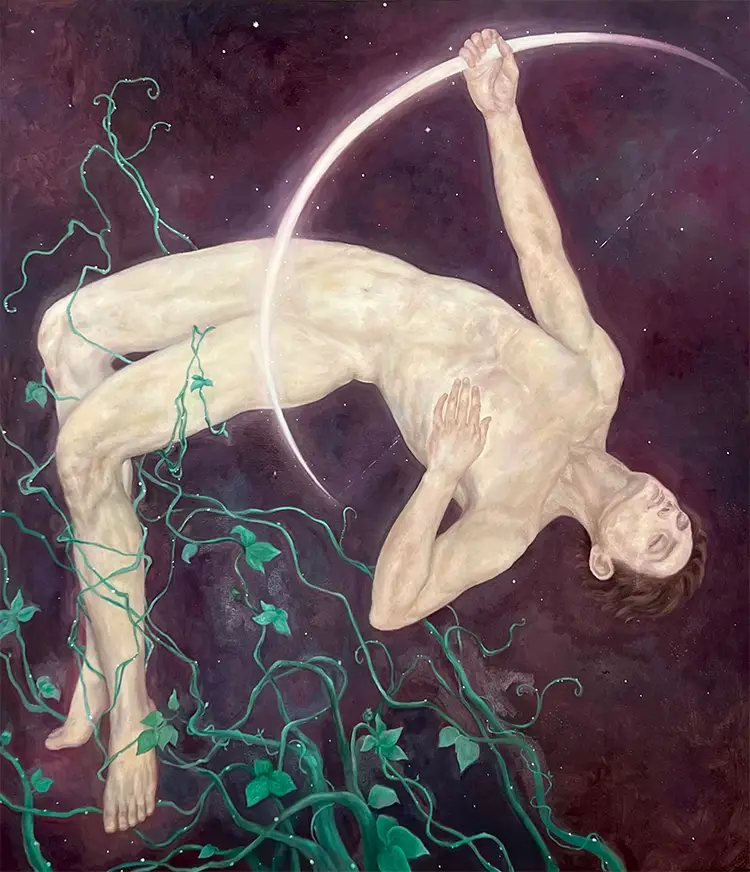
Qinying Cai: The Anatomy of an Evolving Style
Cai’s artistic style remains fluid, intentionally resisting definition in order to mirror the changing emotional states that inspire it. While her early education was rooted in the precision of classical realism, her current work leans heavily into emotional exploration. She views each painting as a psychological snapshot—a moment suspended in time, filled with nuance, contradiction, and vulnerability. Her subjects are not defined solely by their physical presence but by the inner stories they carry, the silent weight of resilience, isolation, and personal reckoning. Rather than presenting polished narratives, Cai chooses to honor complexity, acknowledging that growth and struggle often exist side by side.
Themes of emotional endurance and quiet transformation recur frequently in her work. She is particularly drawn to states of inner conflict—those moments where we feel both broken and whole, disconnected yet aware. Through her paintings, she invites viewers to engage with feelings that are often tucked away: loneliness, vulnerability, grief, and the tentative hope that follows. Her goal is not to romanticize pain but to normalize it, to show that even the darkest emotional states can be softened by acceptance and ultimately transformed. The result is a body of work that feels not only intimate but also universal, offering a mirror to the private struggles many hesitate to share.
One painting that powerfully encapsulates her approach is Falling, a deeply personal piece created after she completed her formal studies. Painted during a time of emotional exhaustion and cultural dislocation, the work features a solitary figure in descent, simultaneously cradling himself in a gesture of self-preservation. That dual motion—falling yet holding on—captures the essence of Cai’s emotional philosophy. It embodies the tension between collapse and resilience, between despair and the conscious decision not to give up. Falling is more than a self-portrait of pain; it is an assertion of agency in the face of emotional crisis, making it a cornerstone in her artistic narrative.
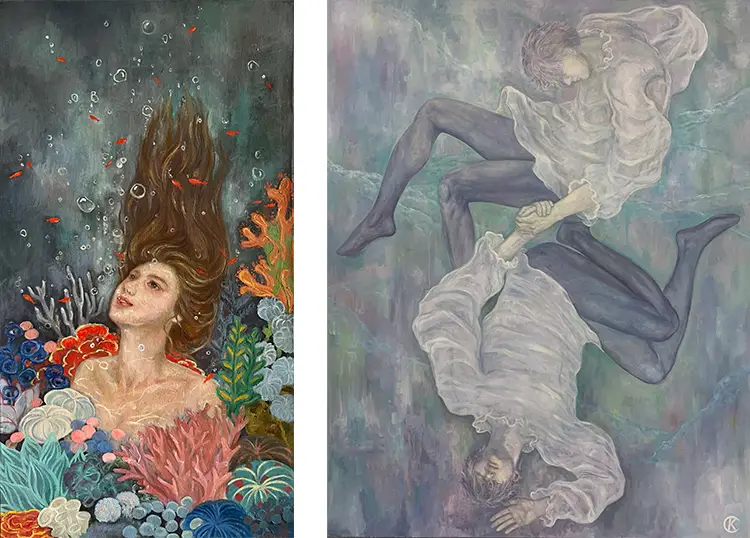
The Studio as Sanctuary: Tools, Space, and Silence
Cai’s creative process is inseparable from the environment in which it unfolds. Her ideal workspace is defined by clarity and calm—natural light, open space, and minimal distractions allow her to immerse herself fully in the emotional landscapes she seeks to capture. She gravitates toward solitude, finding it to be not just a practical necessity but a spiritual one. In that silence, she reconnects with the emotional memories and psychological impressions that form the bedrock of her paintings. Whether accompanied by music or silence, her studio becomes a private zone where emotion and technique meet without interference.
Maintaining focus in a digitally saturated world is a challenge she does not ignore. Cai is acutely aware of the emotional noise generated by social media and everyday life. Still, her return to the canvas is deliberate—a ritual of self-reconnection. In her view, distraction is not something to be feared but managed, much like emotion itself. Painting offers her a way back into presence, a path to clarity when the external world becomes too loud. This intimate relationship with her work space reflects the same emotional honesty that characterizes her paintings.
The choice of oil as her primary medium is deeply intentional. Beyond its historical significance and visual richness, oil paint offers a tactile resonance that aligns with the kind of emotional depth she aims to express. The medium’s ability to hold light, texture, and subtle tonal shifts mirrors the complexity of the feelings she portrays. While she has experimented with other materials, oil remains her truest visual language—a medium that not only supports her technical background but elevates her emotional storytelling. In her hands, oil painting transcends its classical roots, becoming a vessel for the contemporary emotional experience.
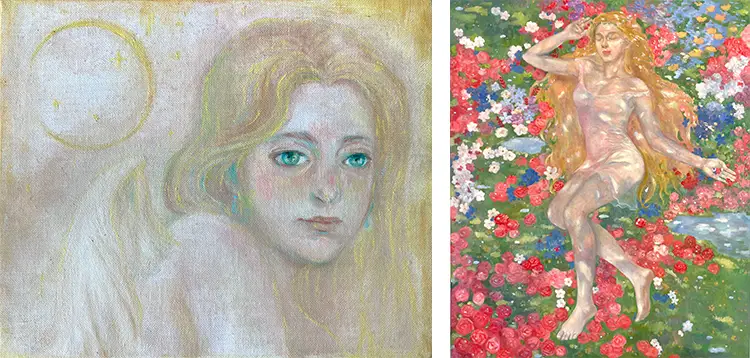
Qinying Cai: Symbols, Series, and the Language of Water
Cai’s future artistic aspirations reflect the same depth and openness that define her current work. She envisions a series focused on emotional growth, told through a lexicon of universal symbols—grief, hope, rebirth, isolation—all themes that transcend culture and language. Her goal is not to impose interpretation but to offer visual touchstones that help people locate themselves within their own emotional journeys. The planned series would continue her exploration of the emotional undercurrent that flows beneath human experience, giving it form through a cohesive and symbolic body of work.
Water has emerged as a recurring image throughout her visual vocabulary, and she hopes to deepen this connection through travel-based projects. Oceans, rain, and waves are not merely aesthetic choices for Cai; they represent emotional movement, transition, and release. She finds comfort and clarity in these natural elements, and believes they hold powerful metaphorical weight. A future body of work centered around these water motifs would allow her to examine emotional states in a broader environmental context, enriching her practice while offering viewers a visual language rooted in nature and feeling.
Her artistic influences, spanning from Fechin to Rembrandt, underscore the breadth of her vision. Yet it is Leonardo da Vinci who resonates most deeply with her—not only for his mastery of painting but for his interdisciplinary curiosity. She admires how Da Vinci’s artistic output was one facet of a much larger intellectual life, and this mindset has shaped her own ambitions. Cai’s work already reflects a similar expansiveness: grounded in technique, but unafraid to navigate emotion, memory, and metaphor. Looking ahead, her art will continue to be a space where these forces converge, offering not answers, but deeply felt reflections.
